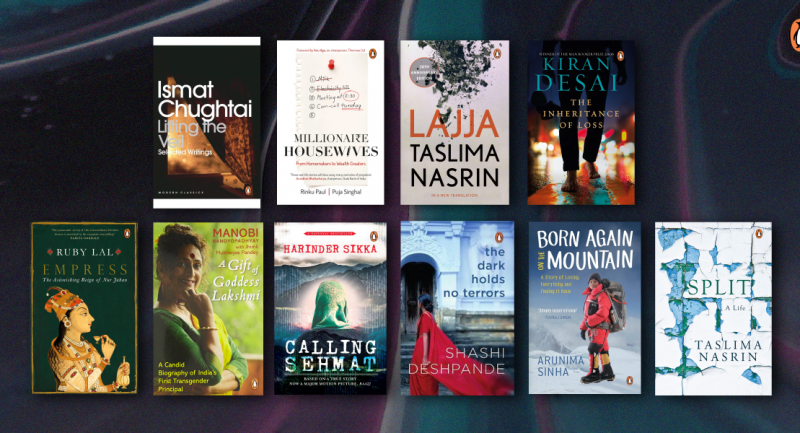
DIYer n. A disrupt-it-yourselfer; a Jugaad 3.0 innovator; an employee who acts and behaves more like an entrepreneur in the context of an established organization
Dr. Simone Ahuja – consultant, author, speaker and entrepreneur, is the CEO of Blood Orange where her mission is to empower innovators in large organizations and mobilize them with entrepreneurial tools for a single purpose: to transform the corporate culture from the inside out using design and lean principles. In Jugaad 3.0 Hacking the Corporation, she shifts the focus from ‘entrepreneurs’ to ‘intrapreneurs’, the incredible ‘corporate hackers’ who tap into and around the bureaucratic machinery surrounding them to advance their projects. Or we could call them ‘constructive disrupters’,since today’s intrapreneurs often seriously challenge existing business from product offering to business model, yet they do it actively from the inside and, by doing this, help keep the enterprise viable.
Based on hundreds of interviews, as well as the author’s consulting work within companies, Jugaad 3.0 Hacking the Corporation identifies the competencies these corporate hackers possess. It also offers a spectrum of carefully crafted archetypes to help people see themselves in this trend and allow organizations identify the innovators in their midst.
Read on to learn more about eight inspirational intrapreneurs whose passion and innovation transformed organizations from within-
Balanda Atis —As a chemist formulating mascara at L’Oréal USA, she set her sights on formulating foundations that did not look ashy on darker skins.
“Although Atis and her colleagues were not freed from doing their day jobs, L’Oréal gave the trio access to a lab. Fuelled by passion and purpose, they produced and tested foundation samples on their own time. Lacking opportunities for data collection, they tagged along on trips to existing conferences and fairs across the country, collecting skin tone measurements from thousands of women of colour. The big breakthrough came when Atis discovered they could work with an existing colour compound. Ultramarine blue was seldom used in cosmetics and difficult to work with, but it allowed them to create richer, deeper shades without the muddy finish that was so common in existing darker foundations. Atis and her tiny team succeeded in satisfying a massive customer need that had existed for generations.”
Ravi Ramaswamy— He led the innovation team behind the Efficia ECG100 an easy to use ECG after realizing that resource-constrained settings needed medical systems should not only be easy to buy but also easy to use and did not require expensive specialized training.
“The prototype exceeded everyone’s expectations. What is now a diagnostic-quality electrocardiogram started with the team’s purchase of an off-the-shelf mobile device. Any Android phone or tablet could act as the user interface after the simple installation of an app. The team’s energies went into making an ECG acquisition box that was just as compact (the finalproduct weighed fewer than ten ounces) and intuitive to use. ‘We worked on it for about six to eight months,’ Ramaswamy recalled, before asking for a meeting with Philips Healthcare’s business unit leader. After hearing the idea and trying out the prototype, the executive said: ‘This is a fantastic product. It’s going to be the pathway to the future.’ Ramaswamy reported that ‘from then on, there was no looking back. We had the complete support of the business unit in terms of driving this model.’”
TOYOTA US TEAM—They worked on the margins of Toyota’s organization to redevelop the Toyota Avalon.
“Take the wholesale redevelopment of the 2013 Toyota Avalon. Led by designers and engineers working far from the company’s Japanese headquarters, the initiative was culture defying for Toyota. When the US-based team told their story to industry analyst Mark Phelan, they stressed that they ‘worked in the margins of Toyota’s playbook, following the old adage that it’s better to beg forgiveness than permission’”
Doug Dietz—After seeing the discomfort of young children getting CT scans, he developed the GE Adventure Series—which involves turning dark, scary CT scanning tunnels into inviting storybook hideaways for young patients.
“First, it was by visiting a customer’s facility—the paediatric oncology department of a major hospital—that industrial designer Doug Dietz recognized a customer problem crying out for a better solution. He tells the story of how he had just finished working on a CT design project and thought he’d done a wonderful job. He was very proud of himself, and in 2005 he went to one of the hospitals where the equipment was being installed for the first time. But it only took an hour of observation for him to realize how reductively he had pursued his mission. The first people he watched interacting with the new machinery were a family with a young child. The child was so terrified by the machine that she needed to be sedated. Dietz had to be there to get that the key to better outcomes—including better image capture, higher machine utilization and better patient experience—was decreasing the need for sedation. It wasn’t just about making machines more capable; it was about making children—and families—more comfortable.”
Lars Kolind—His spaghetti organization at Oticon allowed employees across the board to choose projects according to their skills or as an opportunity to develop new skills, and share equal responsibility for projects.
“Going back even further to 1990, an executive named Lars Kolind arrived at the Danish company Oticon with a bold new structural idea he called ‘the spaghetti organization’. If you think about the clean boxes and lines on the traditional command and- control organization chart, and then you think about what happens to those lines in a Holacratic or Hollywood system, you see where he got his metaphor. To the great surprise of the engineers working on Oticon’s innovative hearing aids, asvwell as all its functional groups from finance to sales and from HR to PR, Kolind in one fell swoop did away with everyone’s job title and moved them all from their accustomed offices and desks too. Most important, he told them that it was up to them now to decide where their talents could be best applied. No one would be assigned to projects where they would receive topdown mandates from project bosses.”
Kishore Biyani—His innovative intra-organization recruitment to create more ‘Kishore Biyanis’ for leadership roles.
“In January 2016, he put the call out across his organization for applicants interested in those leadership roles. Already, this was unusual, since the recruiting did not look outside FCL’s walls: this was a campaign, called Ban Jao Biyani, run wholly within the organization. More interesting still, having received 450 applications from employees, he and his team then ‘shortlisted’ fifty applicants, and put them through a boot camp where they were ‘trained on management aspects and asked to present a business plan for the brand they had bid for’. This was, in effect, the kind of competition some organizations today host for proposed innovation projects—but in this case, it was not intrapreneurial ideas but the intrapreneurs themselves who were being chosen for further development and investment.”
SHARMILA SAHA AT Mindtree—Mindtree’s programme
‘5 X50’ chose five intrapreneurial projects, each of which was judged to have the potential to grow to $50 million in revenues. The five were carefully selected through a competitive process and the winning teams were given the full support of an incubator-style experience of mentoring and resource provision.
“A quick win from that programme was a new line of business: Mindtree’s Digital Surveillance unit, launched in 2013. The team behind it, led by Sharmila Saha, was driven by the new market demand for better public-space surveillance technology in the wake of high-impact terrorist attacks, seen on a global scale by the 11 September 2001 attacks in the United States and the Mumbai attacks of 26 November 2008. It saw that potential clients like US Homeland Security were struggling with conventional CCTV feeds, which required hours of tedious monitoring, and thought it could come up with next-generation capabilities. Prior to the 5 X 50 initiative announcement, Saha and four colleagues had been working for half a year on the concept, which features audio-video analytics and real-time updates. Winning the competition meant that Mindtree invested about $1.5 million (about Rs 9 crore) to incubate it to the point where it was ready for its first client, the Bangalore City Traffic Police.”
Babak Forutanpour—He found himself the accidental founder of a movement Qualcomm. The group acquired a name—FLUX, for ‘forward-looking user experience’.
“This is what Babak Forutanpour was up against as a software engineer at Qualcomm circa 2004. Once he was onboarded and unpacked his laptop, he realized there was no suitable place to bring a new idea to have it vetted and considered for development. ‘No one was listening, and my boss didn’t even want to brainstorm,’ he recalled. Eventually he was so desperate for a sounding board that he pulled together a ‘little biweekly luncheon’ with like-minded people outside his usual circle. ‘If nothing else,’ he figured, they could all ‘eat a ham sandwich with someone interesting’. But that initial group quickly decided to go beyond the sandwich and try to accomplish something more substantial together. In short order they came up with a cool new technical solution for reducing ambient noise. After a thorough vetting of prototypes by subject-matter experts, a patent that eventually produced real value for Qualcomm was applied for and awarded.”
For more, get a copy of Jugaad 3.0!









